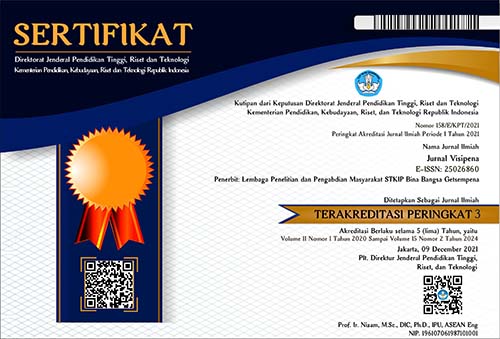MODEL EPIDEMI SIRS DENGAN TIME DELAY
Abstract
Epidemi merupakan suatu keadaan berjangkitnya suatu penyakit menular dalam populasi pada suatu
tempat yang melebihi perkiraan yang normal dalam periode yang singkat. Penulisan ini membahas
menurunkan model epidemi SIRS dengan time delay melalui model matematika berdasarkan model
epidemi SIRS (Susceptible, Infective, Recovered, Susceptible). Model epidemi mempunyai dua titik
kesetimbangan, yaitu adalah titik kesetimbangan bebas infeksi penyakit dan titik kesetimbangan
endemi. Syarat dan kestabilan titik kesetimbangan ditentukan oleh bilangan (R0), yaitu nilai yang
menentukan ada atau tidaknya penyebaran infeksi penyakit pada suatu populasi. Hasil penelitian
diketahui bahwa kesetimbangan bebas penyakit stabil global untuk semua > 0 ketika jumlah
bilangan R0 < 1. Dapat dikatakan, time delay tidak dapat mempengaruhi kestabilan kesetimbangan
bebas penyakit. Dengan kata lain, pengaruh time delay dapat diabaikan untuk R0 < 1. Namun, ketika,
R0 > 1 kestabilan kesetimbangan endemi akan dipengaruhi oleh time delay.
Downloads
References
Anderson, R. M. and May, R. M. (1991). Infectious Diseases Of Humans : Dynamics and Control. Oxford University Press, Oxford, UK.
Anton, H. (1998). Aljabar Linier Elementer. Erlangga, Jakarta.
Enatsu, Y. and Messina, E. (2012). Global Dynamics of a Delayed SIRS Epidemic Model with Class of Non Linear Incidence Rates. Applied Mathematics and Computation, Volume 218, No 9, 5327--5336.
Finizio, N. and Ladas, G. (1982). Introduction to Differential Equations with Difference Equations. Mathematics Computing.
Guckenheimer, J. and Holmes, P. (1983). Nonlinear oscillation, dynamical systems, and bifurcations of vektor fields, Spinger, New York. Verlag.
Hethcote, H. W. (2000). Mathematics of Infectious Diseases, SIAM, Vol. 42, 599--653.
Haberman, R. (1997). An Introduction to Applied Mathematics, Mathematical Models, Prentice-Hall, Inc.
Hale, J. and Lunel, S. (1993). Introduction to Functional Differential Equations. Springer,
New York. USA.
Huitao, Zhou. and Yiping, Lin. (2013). An SIRS Epidemic Model Incorporating Media Coverage with Time Delay. Discreate Dynamics in Nature and Society, Volume 2013, Hindawi publishing Corporation.
Karmack, W. O and McKendrick, A. G. (1927). A contribution to the mathematical theory of epidemics. Proceedings of the Royal Society of London, Volume 115, 700--721.
Liu, W. (2013). A SIRS epidemic model incorporating media coverage with random pertrubation.
Abstract and Applied Analysis, Volume 2013, Article ID.
Lowe, C. R and Kostrzewski, J. (1973). Epidemiology, A Guide to Teaching Method, Churchill Livings tone.
Waluya, S. B. (2006). Persamaan Differensial Biasa. Graha Ilmu,Yogyakarta.





















